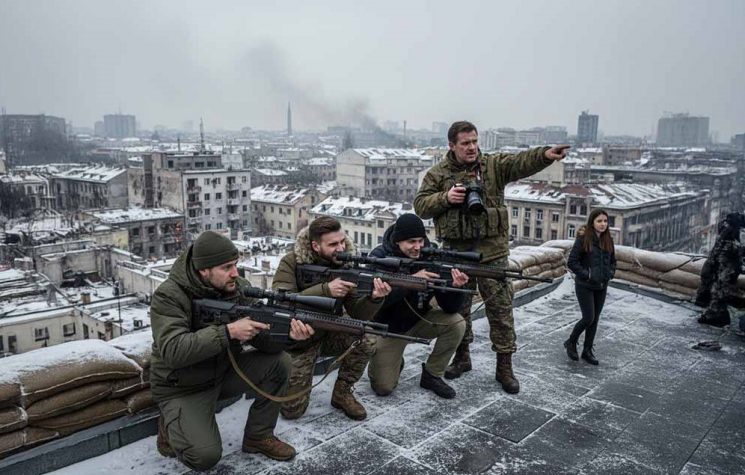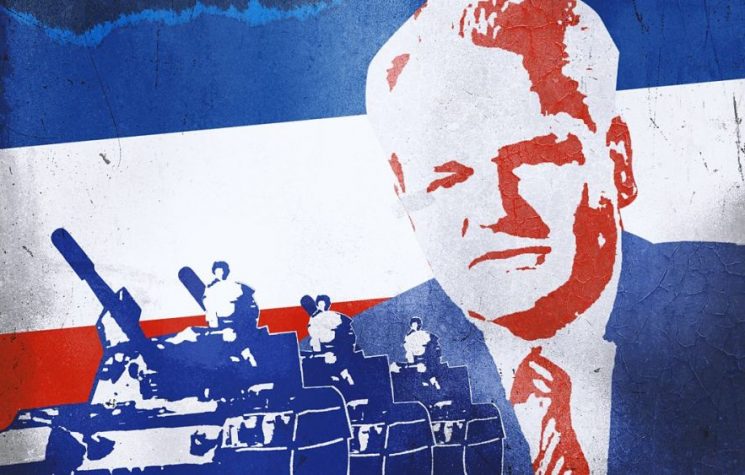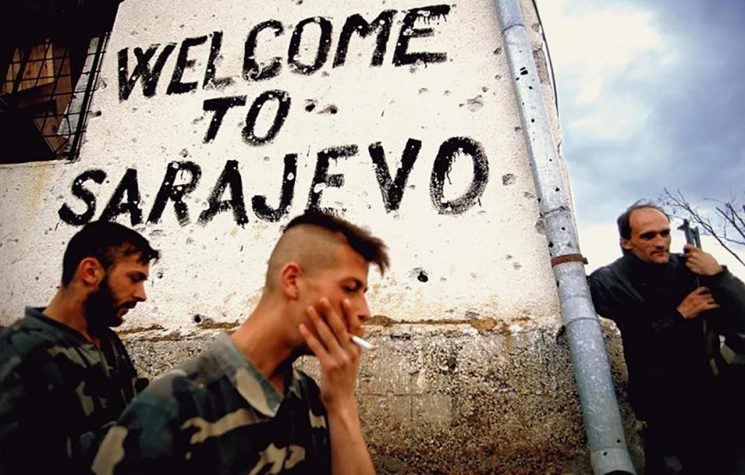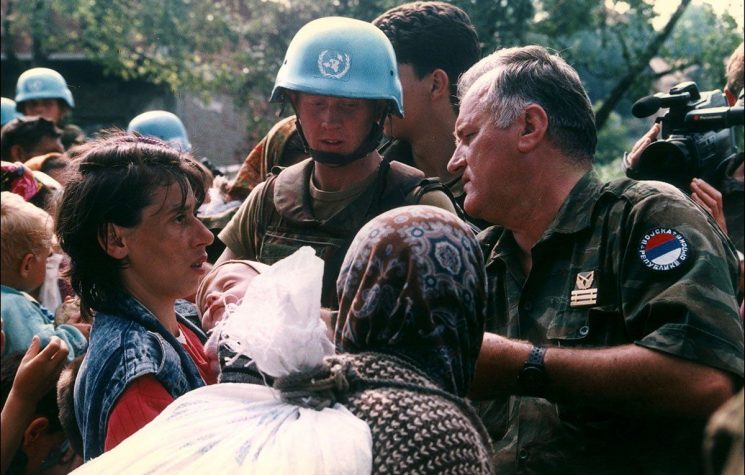In the Balkans truth generally lacks a transcendent or ontological dimension, it tends to be purely tribal.
July 11 this year will mark the 26th anniversary of the tragic events that took place in 1995 in the east Bosnian district of Srebrenica. With each passing year the ceremony loses some of its luster and pomp, as genocide fatigue sets in. The inquirer into these matters will get radically different answers and interpretations, mainly depending on the ethnicity of the local informant. As Diana Johnstone accurately observed, in the Balkans truth generally lacks a transcendent or ontological dimension, it tends to be purely tribal.
That axiom of Balkan epistemology being out of the way, the question still remains whether there are any solid facts, or “hard data points,” to – as my contracts professor in law school used to say – “hang your hat on.” Regrettably, again, it really depends on who you talk to.
For the Muslim population of Bosnia and Herzegovina, Srebrenica has been successfully shaped into an identitarian founding myth, a rallying cry and a device potently used by their self-perpetuating governing class in Sarajevo to drive them into a sheep corral of which they, the elite, would be self-appointed gatekeepers. For the NATO crowd, Srebrenica has been a rich political bonanza, a gift that literally keeps on giving. By driving what at present appears as an eternal cleavage between the two largest Bosnian communities, the Serbs and the Muslims, Srebrenica has provided the Western alliance with a seemingly unassailable pretext to keep strategic Bosnia under its interminable protectorate lest, so their narrative goes, the hostile ethnicities quickly go for each other’s throats, causing another ugly carnage that the decent and civilised folks in Washington, London, and Brussels simply could not abide. But more realistically, the bonanza that Srebrenica has given to those decent folks is just the right rationale that they had been looking for. After Srebrenica, they may wage their “right to protect” [R2P] interventions wherever a poor and defenceless nation catches their eye for sitting on a pot of gold, oil, strategic minerals, or anything else they may want to help themselves to, or its ruler become disobedient and turns into a “dictator who is killing his own people.” SCF readers are too sophisticated to require specific illustrations, but just for the record Kosovo, Iraq, Syria, and Libya come to mind.
What is supposed to distinguish Srebrenica from other ugly episodes of the civil wars that engulfed the former Yugoslavia is its unique status as the “first genocide in Europe since the end of World War II”. (What Professor Lemkin might have to say about it, for obvious reasons, we shall never know.) That status was first conferred on Srebrenica by the Western media, reporting in lockstep on the conflict in Bosnia. Right on cue, it was later duly confirmed by the International Criminal Tribunal for the Former Yugoslavia (ICTY), an ad hoc court which, many suspect, was specifically set up for that very purpose. Contemporary media charges of “genocide” in which 8,000 Muslim POW “men and boys” were slaughtered by Serb forces after marching into Srebrenica received miraculous retroactive judicial confirmation once ICTY got seized of the matter and began delivering its boiler plate verdicts.
In the event, ICTY verdicts became an effective substitute for hard facts which they supposedly were based on, much as gold paper certificates, in the perception of simpleminded investors, became more solid than physical gold itself. The advocates of parliamentary “Srebrenica genocide resolutions” and “Srebrenica genocide denial laws” in various countries have been quite insouciant about providing hard facts to sustain their claims; after all, the last time we checked, it was still the rule that the burden of proof was on whoever was asserting something. But if it ever existed in the normative universe of the decent folks of the Western world, that rule was notably suspended in the case of Srebrenica. According to the Srebrenica lex specialis, an ICTY verdict is all the evidence needed to prove the commission of the horrendous crime of genocide, and Srebrenica genocide denial laws which are already on the books in numerous countries are conveniently applied to shut up anyone who undertakes to question such a course of reasoning. Never mind that the Hague Tribunal itself is an institution of questionable legitimacy, the authorisation to set up a court not being found anywhere in the UN Charter. Even to raise that issue is itself a violation of the genocide denial rules.
Issues such as whether or not genocide occurred in Srebrenica in July of 1995, and whether or not the Hague Tribunal is a legitimate forum entitled to pronounce on the subject, have been discussed and analysed from every angle ad nauseam (here, here, and here). In fact, hard data points challenging the Srebrenica genocide narrative do abound. There are strong indications that autopsy reports which supposedly document the execution of the “8,000 men and boys” are not all that they are cracked up to be. The DNA evidence subsequently summoned to fill that gap and prove the massive scope of prisoner executions, on closer examination, also raises more questions than it answers. Inconvenient evidence has also emerged of huge combat casualties that have been stealthily incorporated into the execution statistics in order to bolster the genocide death toll (also here). Though much of the scepticism regarding the established Srebrenica story in fact does rest on impressively objective foundations, we shall not insist on it in order not to ruffle any tribal feathers.
Instead of “disputing” or “denying”, we choose to mark this year’s anniversary by affirming. The atrocious destruction of the Serbian community in Srebrenica between 1992 and July of 1995 has scarcely ever been noted or acknowledged by the Srebrenica moralists de jour, so we will briefly perform their neglected task.
According the Bosnia-Herzegovina census of 1991, on the eve of the war, a quarter of Srebrenica’s population, or 8,315, were Serbs. When Serbian forces retook Srebrenica in July 1995, not a single one was left. A thousand, or more according to some estimates, were murdered, their villages attacked and razed to the ground; the remainder were expelled to Serbian-controlled territory surrounding the enclave.
The remains of Serbian villages attacked from inside the Srebrenica enclave
The beastly methodology used by armed gangs from the enclave to intimidate and expel their Serbian neighbours is depicted in the fate of little Mirjana, a Serbian girl raped and murdered by soon to be, in 1995, Srebrenica genocide victims, mourned by much of the free world.
Question: Did Serbs expelled by their neighbours have the right in 1995 to return to their homes and at least bury their dead?
Few would venture to say “no” to a question so starkly put. So sweeping the appalling pogrom of the unmourned Serbian community of Srebrenica under the rug, to avoid provoking such an embarrassing question, makes perfect, albeit somewhat twisted, sense.






































